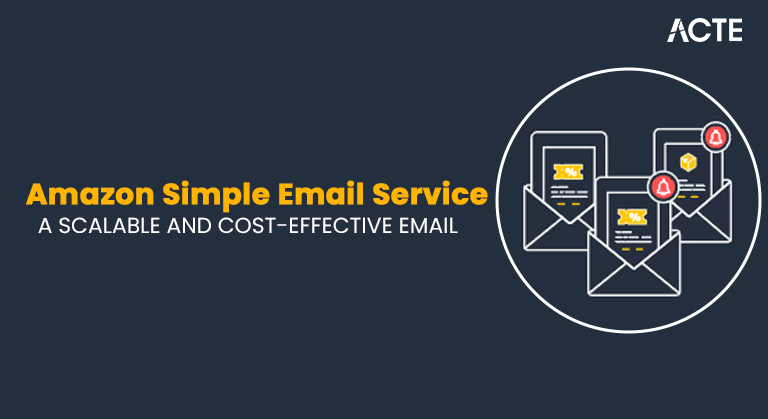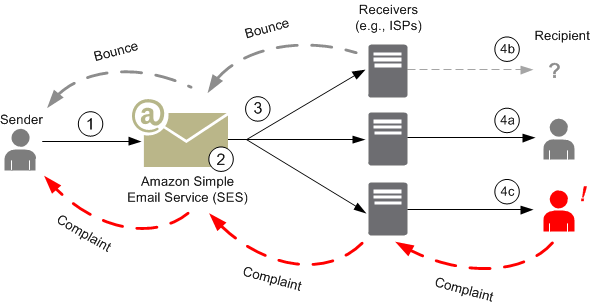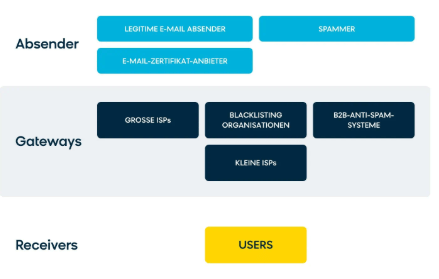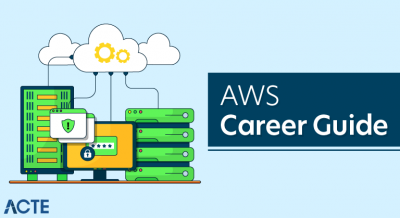
- Introduction to AWS SES
- Key Features of AWS SES
- How AWS SES Works
- Setting Up AWS SES
- AWS SES Pricing Structure
- Common Use Cases of AWS SES
- Security and Compliance in AWS SES
- Performance Optimization Tips
- Integration with Other AWS Services
- Advanced Email Deliverability Strategies
- Everyday Use Cases of AWS SES
- Real-World Use Cases and Case Studies
- Future Trends in Email Marketing with AWS SES
- Conclusion
Introduction to AWS SES
Amazon Simple Email Service (AWS SES) is a cloud-based email-sending service designed for businesses to send transactional emails, Email Marketing messages, and notifications at scale. AWS SES provides a cost-effective, reliable, and scalable infrastructure that enables companies to engage with their customers efficiently. IP addresses offer high deliverability rates, built-in Amazon Web Services Training , and seamless integration with other AWS services, making it an ideal choice for businesses looking to automate their email communications. AWS SES is widely used by startups, enterprises, and developers who need an easy-to-use, high-performance email-sending service. Unlike traditional email-sending platforms, Amazon web service SES eliminates the complexity of managing mail servers, handling bounced emails, and ensuring email authentication. With advanced analytics, real-time monitoring, and flexible API-based integration, AWS SES stands out as a powerful tool for businesses looking to optimize their email campaigns.
Key Features of AWS SES
- High Deliverability: Uses dedicated IP addresses and reputation management to ensure high email deliverability rates.
- Flexible Email Sending: Supports SMTP and API-based email sending for various applications.
- Cost-Effective: Pay-as-you-go pricing model with no upfront fees.
- Email Monitoring and Analytics: Provides real-time feedback on email open rates, bounces, and Amazon Cloudfront and Its Benefits.
- Security and Compliance: Features DKIM, SPF, and DMARC authentication to prevent email spoofing.
- Integration with AWS Services: Works seamlessly with AWS Lambda, Amazon SNS, and Amazon S3.
- Customizable Email Templates: Allows businesses to personalize email content easily.
- Inbox Placement Optimization: Ensures emails land in the recipient’s inbox instead of spam folders.
- Dedicated IP Pools: Helps companies to maintain a strong sender reputation.
- Event-Driven Notifications: Automates responses based on email engagement data.
Become a Cloud Computing expert by enrolling in this Cloud Computing Online Course today.
How AWS SES Works
Amazon web service SES provides businesses with a reliable infrastructure for sending emails using either SMTP or API requests. Users can configure email-sending domains and email authentication mechanisms like DKIM and SPF to improve email credibility. Once set up, Amazon SNS routes emails through its optimized email-sending infrastructure, ensuring that messages reach recipients with minimal risk of being flagged as spam. The service also offers bounce and complaint handling, allowing businesses to monitor and improve email engagement rates effectively. Additionally, Amazon Simple Email Service supports high email sending volumes, making it ideal for large-scale email campaigns, transactional emails, and notifications. It offers detailed reporting and analytics, enabling users to track email performance, bounce rates, open rates, and delivery status in real time. SES also integrates seamlessly with other AWS services like Amazon web service Lambda, Amazon SNS, and Automate Security with Azure Sentinel , enhancing the ability to automate processes and monitor email delivery. The service allows for flexible sending configurations, including the use of dedicated IP addresses for improved deliverability. Businesses can set up email templates for personalized communications and ensure consistent branding across messages. With its pay-as-you-go pricing model, AWS SES is cost-effective and scalable, accommodating both small businesses and large enterprises. Security features such as encryption ensure that Email Deliverability content remains protected in transit. SES also helps improve sender reputation, ensuring better inbox delivery rates over time.

Setting Up AWS SES
- Verify Email Identity: Confirm your domain or email address to send emails.
- Set Up IAM Roles: Configure permissions for secure email sending.
- Configure SMTP or API: Choose between SMTP and API-based email-sending methods.
- Enable DKIM and SPF Authentication: Improve AWS Training security and prevent spoofing.
- Monitor Email Performance: Use Amazon Simple Email Service metrics to track email deliverability.
- Apply Sending Limits: AWS SES requires new users to start in a sandbox mode before increasing sending quotas.
- Use Email Templates: Create predefined templates for faster and more consistent email delivery.
- Implement Email Sending Policies: Define rate limits and thresholds to prevent spam complaints.
- Outbound Emails: The first 62,000 emails per month are free when sent from an EC2 instance; additional emails cost $0.10 per 1,000 emails.
- Incoming Emails: Free for the first 1,000 emails, then $0.10 per 1,000 messages received.
- Dedicated IP Addresses: Available for $24.95 per month per IP.
- Email Attachments: Charged based on data size at $0.12 per GB.
- Deliverability Dashboard: Additional charge for premium insights and reputation management.
- Email Archiving: Extra costs are applied to store emails sent and received on Amazon SNS.
- Transactional Emails: Sending order confirmations, invoices, and password resets.
- Marketing Campaigns: Bulk email promotions and newsletters.
- Customer Notifications: Alerts, updates, and reminders.
- Application Integration: Automating email workflows in web applications.
- Security Alerts: Sending OTPs, email authentication , and security notifications.
- E-Commerce Communications: Handling customer inquiries and purchase receipts.
- Subscription Renewals: Automating reminders for subscription-based services.
- Survey Distribution: Sending feedback and customer satisfaction surveys.
- Netflix: Uses AWS SES to send automated billing and account update Amazon Quicksight.
- Shopify: Implements AWS SES for transactional emails, ensuring order confirmations reach customers quickly.
- Slack: Utilizes AWS SES for real-time alerts and security notifications to users.
- Airbnb: Sends booking confirmations and promotional offers through AWS SES.
- HubSpot: Enhances its email marketing automation using AWS SES for high-volume email campaigns.
- AI-Powered Email Optimization: Enhanced machine learning models to predict the best time to send emails.
- More Advanced Analytics: Deeper insights into customer engagement and user behavior.
- Enhanced Security Measures: Better fraud detection and email authentication mechanisms.
- Better Personalization Features: AI-driven recommendations for content tailoring.
- Greater Multi-Cloud Integration: Allowing AWS SES to interact seamlessly with non-AWS platforms.
Advance your Cloud Computing career by joining this Cloud Computing Online Course now.
AWS SES Pricing Structure
AWS SES follows a pay-as-you-go pricing model, making it an affordable choice for businesses of AWS Pinpoint a Comprehensive Overview.
Pricing components include:
Everyday Use Cases of AWS SES
AWS SES is widely used for:
Ready to excel in Cloud Computing? Enroll in ACTE’s Cloud Computing Master Program Training Course and begin your journey today!
Advanced Email Deliverability Strategies
Advanced email deliverability strategies are crucial for optimizing email performance and ensuring high inbox placement. One key strategy is to warm up dedicated IP addresses by gradually increasing email volume to establish a positive sender reputation. It’s also important to monitor bounce and complaint rates using tools like Amazon SNS, which helps track email delivery issues and identify areas for improvement. Segmenting email lists is another effective approach, allowing businesses to send targeted content to specific user groups and boost engagement. Using Guide to Becoming An AWS Developer templates ensures consistency in branding and reduces manual work, streamlining the email creation process. Additionally, optimizing the sending rate by adjusting email throughput based on recipient engagement patterns can further improve deliverability. A/B testing enables experimentation with subject lines, content, and CTAs to determine the best-performing combinations and maximize response rates. Finally, engagement tracking through Amazon web service CloudWatch provides real-time analysis of email interactions, allowing businesses to fine-tune their email campaigns and improve overall effectiveness.

Real-World Use Cases and Case Studies
Many organizations successfully use AWS SES to streamline their email communications:
Are you getting ready for your Cloud Computing interview? Check out our blog on Cloud Computing Interview Questions and Answers!
Future Trends in Email Marketing with AWS SES
The future of AWS SES is expected to bring:
Conclusion
AWS SES is a robust, scalable, and cost-effective solution for businesses looking to streamline their email communications. Amazon Simple Email Service provides high deliverability, security, and integration with other AWS services, whether for transactional email campaigns , or customer notifications. By optimizing email configurations, monitoring performance, and adhering to security best practices, businesses can leverage AWS Training SES to enhance customer engagement and improve email reliability. With ongoing advancements, AWS SES is set to become an even more indispensable tool for businesses worldwide.




